Who is Steve?
I have had a great response to my photos of Steve over the past 6 months so I thought I would post up a more detailed explanation of what Steve is and how I have managed to get some shots of him. I have been lucky enough to capture him twice this past year in Northern BC; once while hiking at Berg Lake (as you can see in the shot above) and once at Ness Lake. The title shot shows Steve above (light pink) with a picket fence aurora (green) below it. Its taken looking South towards the North Face of Mt Robson over a very still Berg Lake. Berg Lake sits at an altitude of 1,646 m (5,400 ft) while the North Face of Mt Robson rises 2,308m (7,572 ft) out of the lake to a total height of 3,954 m (12,972 ft) and is the highest peak in the Canadian Rockies.
There is an unknown interaction between the atmosphere and Steve that often causes the picket fence aurora along the side of it. You can see how the two interact in the time-lapse I took below. The shot (and timelapse) was taken on a Canon 6D II with a Samyang 14mm 2.8 at f2.8, ISO 3200, and a 20s exposure time. The time-lapse composes of about 80 shots. Unlike typical a polar Aurora ('Aurora Borealis' in the north and 'Aurora Australis' in the south), Steve is a mid latitude phenomena and runs east west across much lower latitudes than you typically see an Aurora. In this case Berg lake is at latitude of 53 degrees North and I was looking south to get the shots. From accounts on the same night Steve was overhead slightly towards the Canadian side of the Canadian US boarder (or around 49 - 50 degrees North).
You might see a difference in sharpness between the photo and the timelapse. This is due to the fact that the photo was edited using more complex techniques to increase the definition and sharpness. About 20 shots were merged as a smart object in photoshop and the median function applied to reduce noise and increase definition and sharpness. This recovers a lot of lost detail in the mountain however as a side effect it removes most of the stars in the sky due to the nature of the median function (in contrast the mean (or average) function would produce a star trail ). The sky and the water were then masked in photoshop from the best single frame exposure with more traditional noise reduction and sharpening that could be optimised just for the sky. It was then overlaid over the low noise version (from the median smart object ) of the fixed part of the mountain and reflection. This is a particularly useful technique for recovering detail in noisy shadows when doing any type of long exposure night photography.
I have a series of shots taken on the same night as my previous post of Steve directly overhead of Ness Lake at 54 degrees North here. This first shot is looking east with Steve on the right (light pink) with a picket fence aurora (green) on the left.
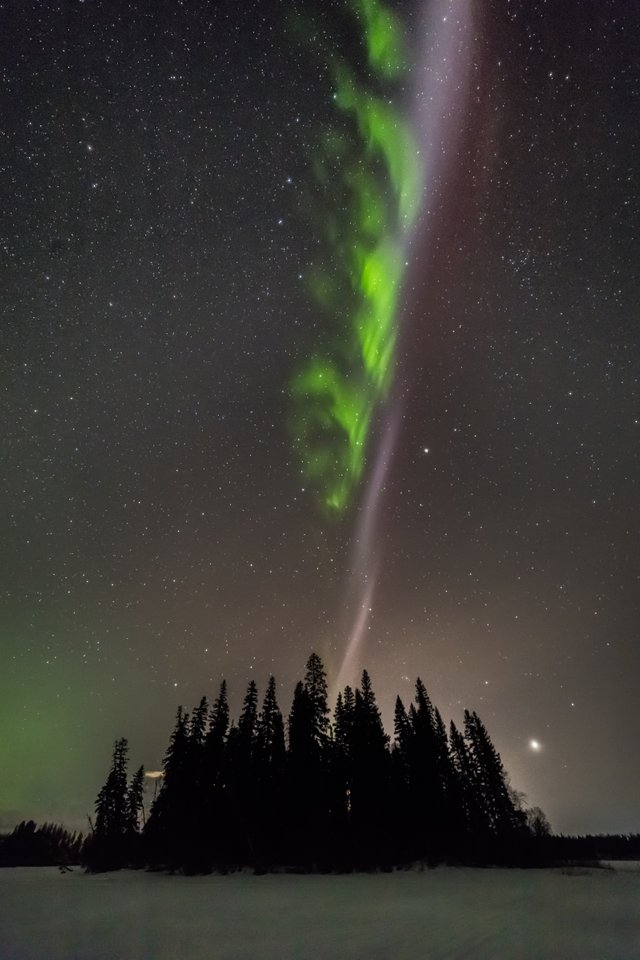
As mentioned in my previous posts while it is a related to the Aurora Borealis (or Northen Lights) ‘Steve’ is a discrete optical phenomenon that was formally documented in 2017 by aurora watchers from Alberta. A group from NASA followed up and it was subsequently determined to be caused by a 25 km wide ribbon of hot gasses at an altitude of 300 km, temperature of 3000 °C and flowing at a speed of 6 km/s (compared to 10 m/s outside the ribbon). The name "Steve" was taken in jest from Over the Hedge, an animated comedy movie from 2006, in which its characters chose that name for something unknown. The name went viral on social media and has seemingly stuck. "Strong Thermal Emission Velocity Enhancement" was suggested as a backronym of Steve which has since been adopted by the team at NASA Goddard Space Flight Center studying Steve. On the 14th of March they had a peer review paper published called New science in plain sight: Citizen scientists lead to the discovery of optical structure in the upper atmosphere.
Not everyone is happy with the name, or the claim of it as a recent discovery. Amateur aurora watches have been looking at the phenomenon for a long time in both the Northern and Southern Hemisphere and incorrectly calling it a proton arc (it has nothing to do with a proton aurora which does not emit in the visible spectrum ). In light of this some have suggested that the term 'Sub Auroral Arc' be used as an alternative name until there is more robust scientific debate on the the matter. In contrast to this I actually like the name 'Steve' as it has engaged the general public with science in a way that’s rare to see and in my view it should be encouraged rather than disparaged because of that. Many terms in scientific history have been named that way; take the facetious use of the term “the Big Bang” by Sir Fred Hoyl which was intended to deride and trivialize his rivals theory . The broader non scientific pubic picked up the term and ran with it and it’s the term we have today despite the frustrations of the scientists at the time.
The shot below is looking west across from the other side of the island . Steve is visible however the picket fence has disappeared by this time. You can see the Aurora Borealis as a green glow to the north in the right this of frame.
This next shot is also looking west down a large open section of the lake while I was walking back home which has Steve overhead (again without any picket fence) and the more familiar Northern Lights or Aurora Borealis to the right of frame. This shot gives you a good indication of how bright Steve was compare to the lights on the houses on the lake.
The final shot is a looking directly overhead at Steve with a picket fence aurora parallel to an area where Steve seems to break up a little and change direction. I have not edited the colour in this shot. For some reason Steve seemed to be a more reddish tone.
All the Ness Lake shots were also taken on a Canon 6D II with a Samyang 14mm 2.8 at f2.8, ISO 3200, with 13s exposure time. Ness Lake and Berg Lake are both in Northern British Columbia, Canada. Feel free to ask me any questions on Steve or photographing and aurora.
You may have already seen that first shot of Steve in the interview @photofeed did with me. If not, and you would like to learn a little bit more about my background in photography, you can read the interview here.
Robert Downie
Love Life, Love Photography
All images in this post were taken by and remain the Copyright of Robert Downie - http://www.robertdowniephotography.com
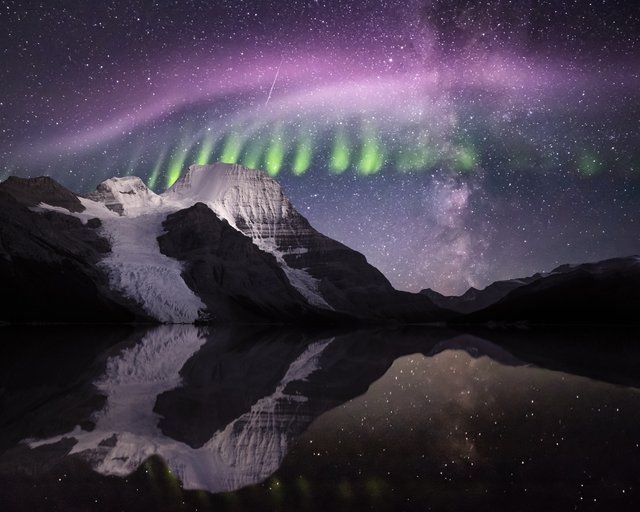
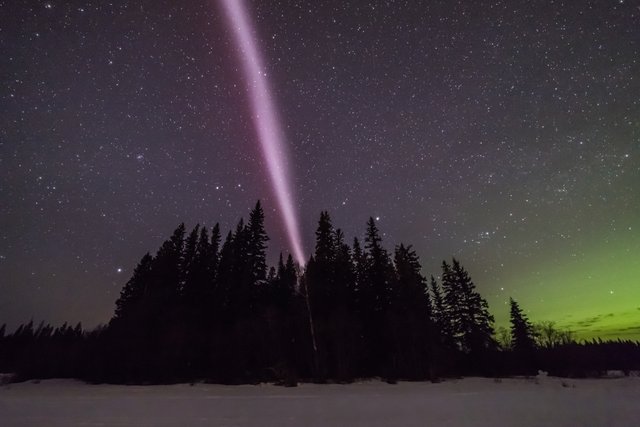
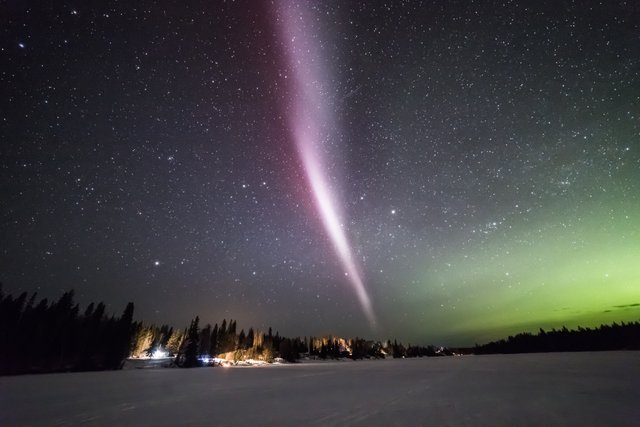
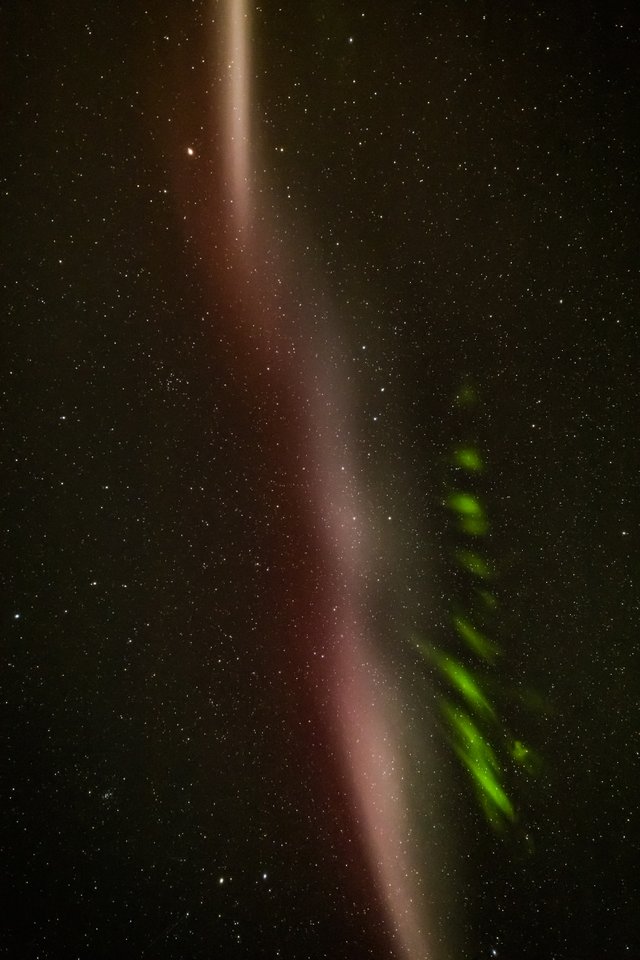
What a wealth of little known information; thank you for introducing us to Steve. I agree with you; I will remember "Steve", but not Sub Arctic Aurora or Sub Auroral Arc or Arctic whatever.... Your photos are beautiful and amazing. I don't know that I will ever travel far enough north to see what you have shown us, so, thank you!
Thanks for the kind comment and support. Yes Steve is so much more memorable.
Cool story.
In the first image the green aurora looks like blurred out text.
Interesting story one the "strek phenomenon", never experienced it myself.
Cheers, Erlend
Thank you !
What killer lighting on the first one!
I remember the one and only time seeing it live.. Thought I was gonna get abducted or something!
That first shot of Mt Robson is back lit by the aurora to the North !
I like the name "Steve". Who is to say that name is any better or worse than naming it "Nero" or "Caesar" or "John"
Agree. I had the shot from ness lake go a little viral on FB and was shown to 50k plus people. From that I had a few people openly criticising the name as childish and complaining about it being classed as newly discovered as people have been looking at it for a long time. I suggested they write a paper and have it pulished in a journal outlining their alternative opinions on the way it was discovered. In the mean time that paper I linked to has recently come out which is authored by NASA scientists (and some people from the Alberta Aurora FB group) and they had collaborated with data collected from the European Space Agency satellites. So both NASA and the ESA now use the term Steve on their website, so I can't see it changing any time soon!
Beautiful man! Such a cool phenomenon. Resteemed!
Thanks guys ! Always appreciate your support !
Beautiful.
Well you done gone and compelled me to follow you around.
Would like to see what else you have coming down the pipe!
Cheers,
Speck.
Thanks! I will try my best not to disappoint ;-)
This is amazing! :-) beautiful aurora!
Cheers !
These are great shots. I've always dreamed of seeing northern lights and imagining photography. I guess it will be impossible for me .. but I love to imagine. Thank you for your detailed explanation. congratulations Rob
Thanks ! You should if you get the chance. Perhaps one day.
Wow man, next level!
Thanks mate !
Wow :) I have just followed you on Instagram as well. You are either super lucky to get all these animals posing, Northern Lights and perfect weather conditions happening :)) or you are just super talented. Probably both :) Keep it up (:
Thanks. Like most things in life it's a combination of luck, hard work and patience ;-)